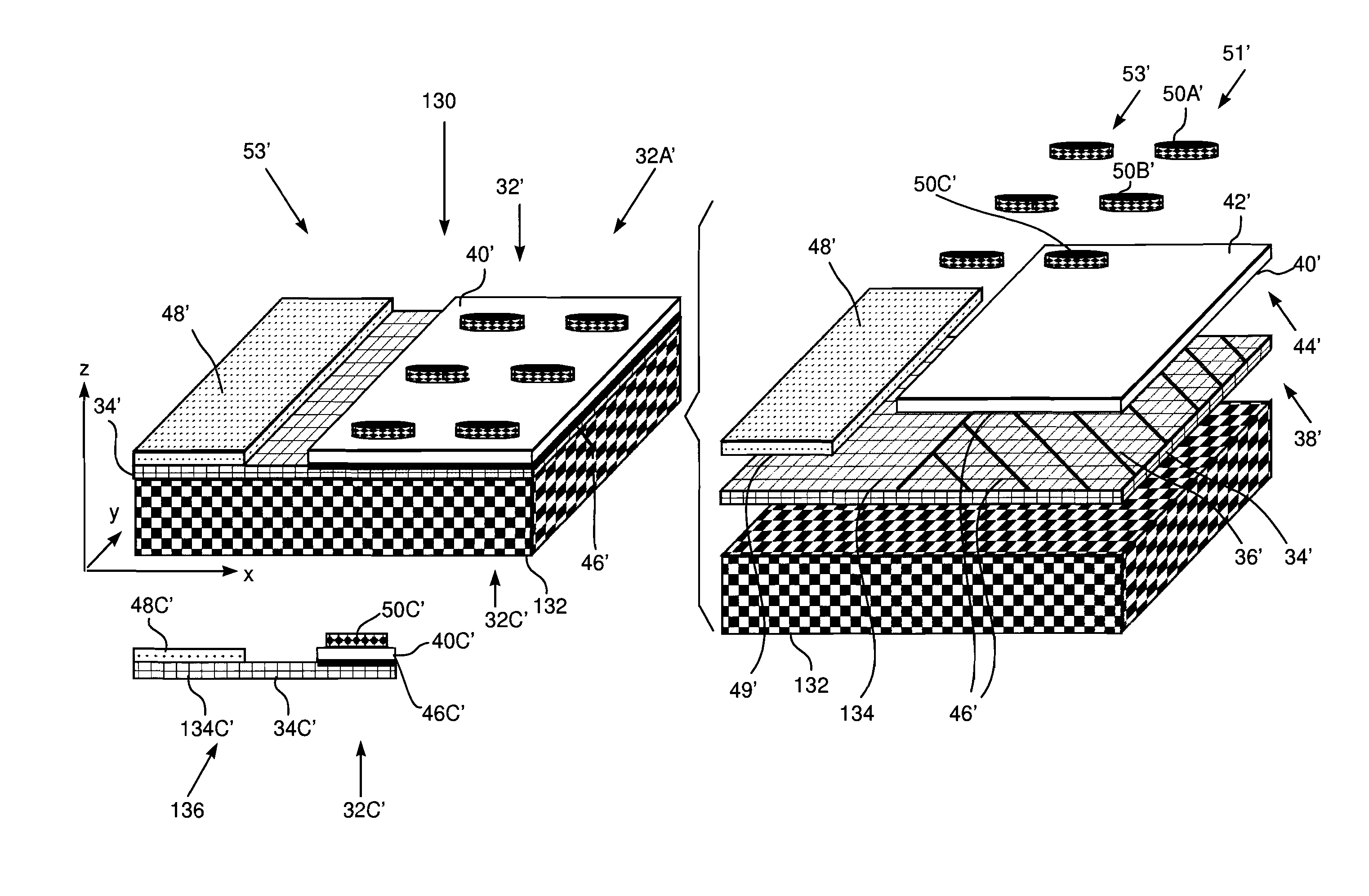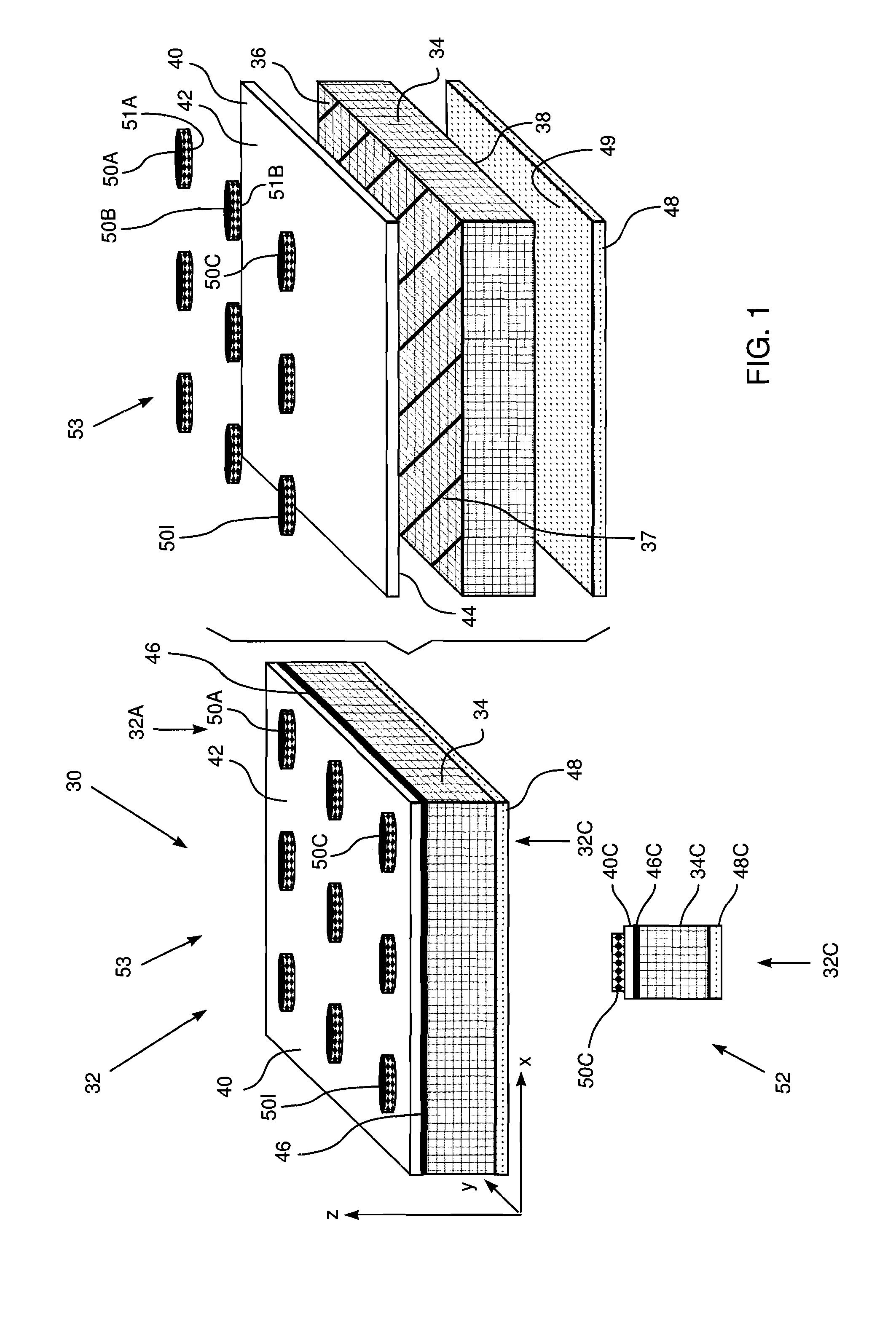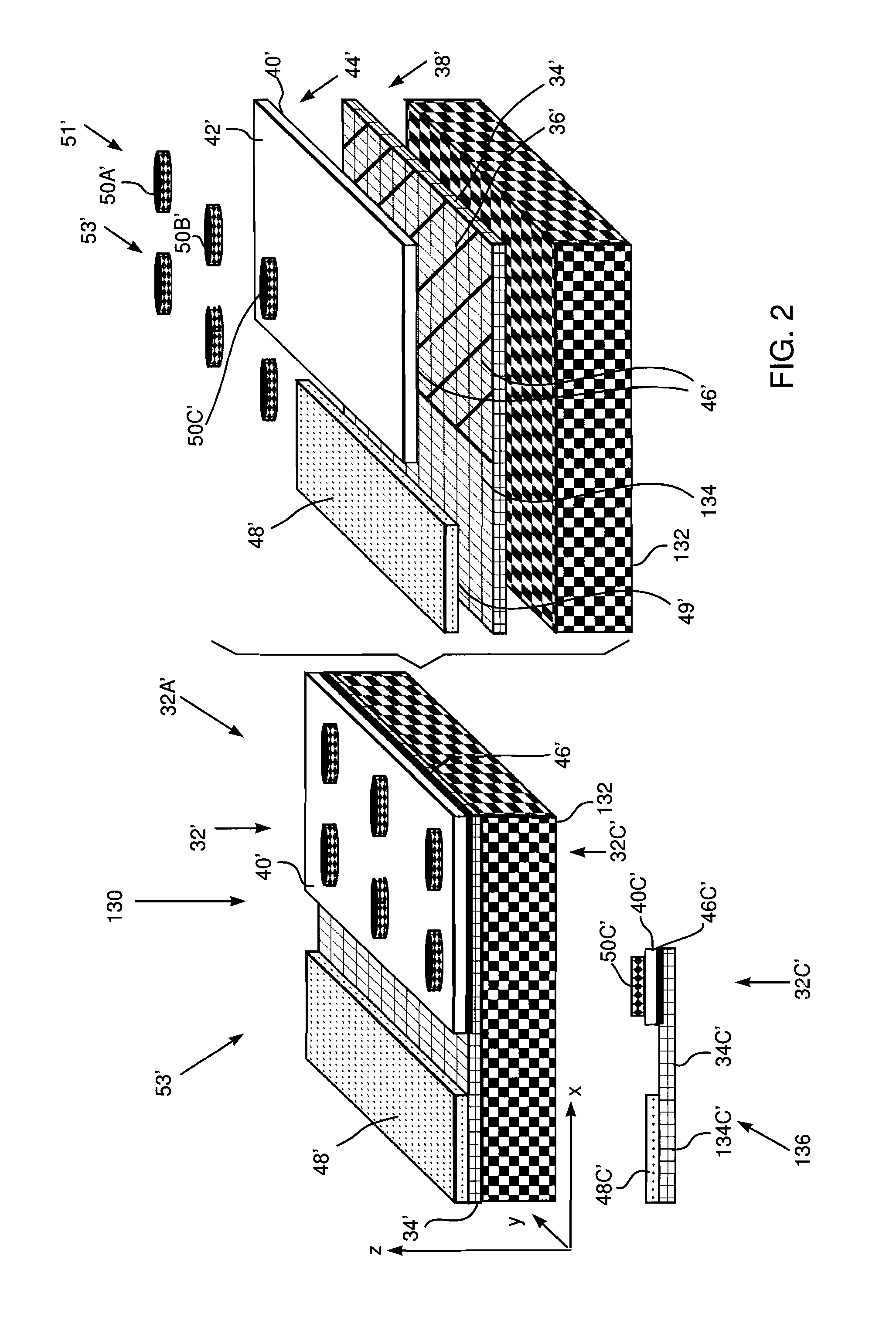Memory Diodes
a memory diode and diode technology, applied in the field of memory diodes, can solve the problems of microelectronics industry, memory industry problems, and memory industry scaling limitations,
- Summary
- Abstract
- Description
- Claims
- Application Information
AI Technical Summary
Benefits of technology
Problems solved by technology
Method used
Image
Examples
examples
[0128]Single cells having p-n junctions were prepared as follows. A first cell corresponded to a cell of single film array 30, a second cell corresponded to a cell of dual film array 130 (FIG. 1 and FIG. 2).
[0129]SrTiO3 thin layers (˜80 nm or ˜160 nm thick), doped with Fe or Nb, were deposited on polished 1.4% Nb-doped (single film configuration, FIG. 1) and undoped (dual film configuration, FIG. 2) SrTiO3 (100) single crystals, 1×1 cm2 in area and 0.5 mm thick, purchased from Crystal Gmbh, of Berlin, Germany. The layers were deposited by pulsed laser deposition (PLD) using commercial 0.1% Fe or Nb-doped SrTiO3 ceramic targets purchased from SCI Engineering Inc. of St. Charles, Mo. The layers were grown in oxygen at a pressure of 55 mTorr (single film configuration) or in high vacuum at ˜10−6 Torr (dual film configuration), and at a substrate temperature of 700° C.
[0130]6000 or 3000 pulses of a KrF excimer laser (λ=248 nm) with an energy flux of 1 J / cm2 and a repetition rate of 3 Hz...
PUM
 Login to View More
Login to View More Abstract
Description
Claims
Application Information
 Login to View More
Login to View More - R&D
- Intellectual Property
- Life Sciences
- Materials
- Tech Scout
- Unparalleled Data Quality
- Higher Quality Content
- 60% Fewer Hallucinations
Browse by: Latest US Patents, China's latest patents, Technical Efficacy Thesaurus, Application Domain, Technology Topic, Popular Technical Reports.
© 2025 PatSnap. All rights reserved.Legal|Privacy policy|Modern Slavery Act Transparency Statement|Sitemap|About US| Contact US: help@patsnap.com



